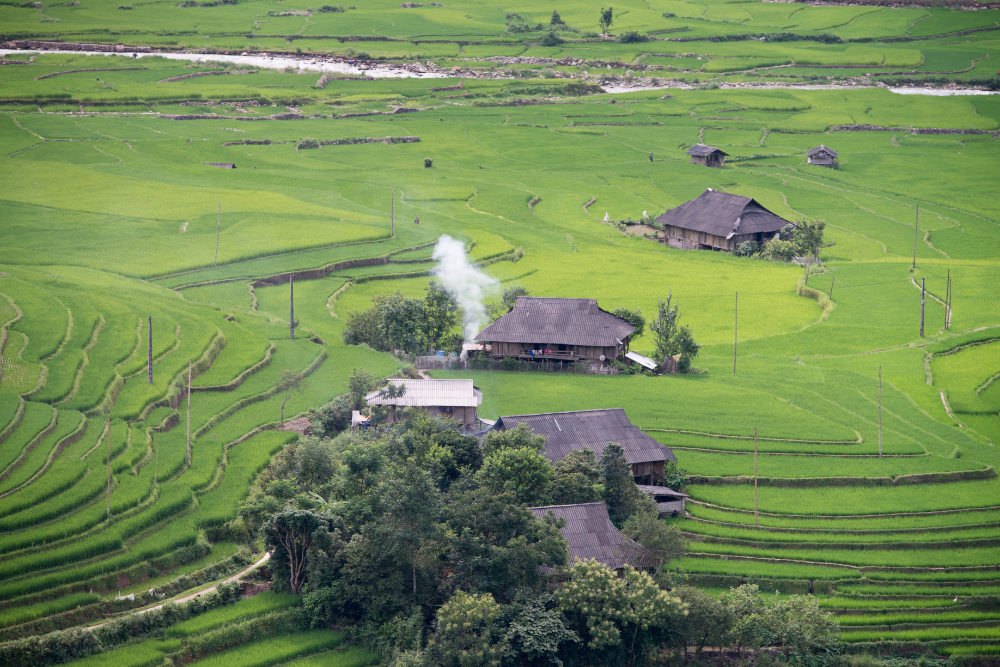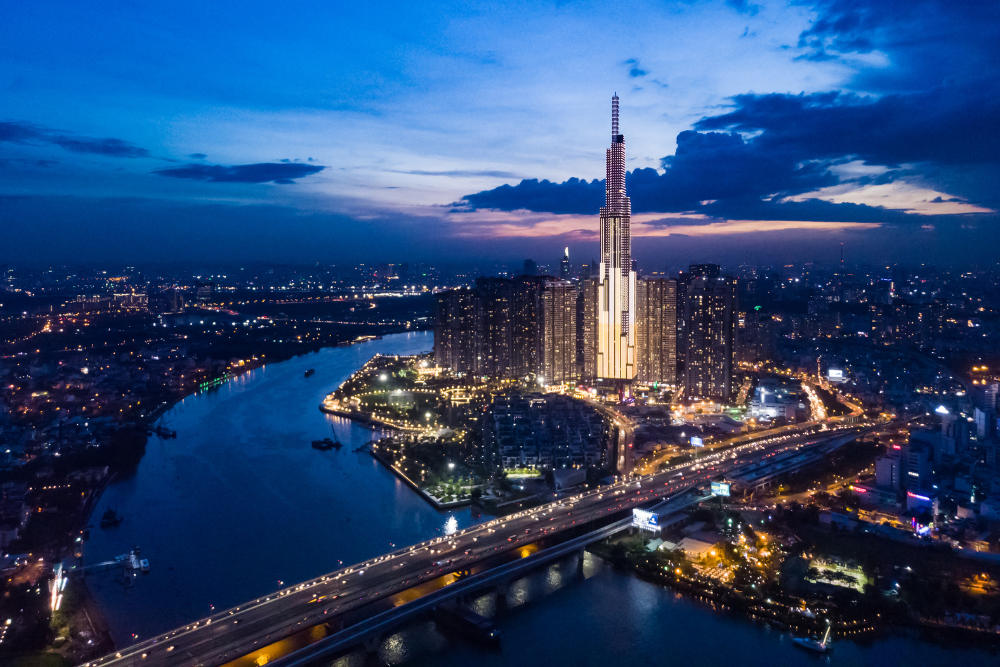Vietnam is a beautiful and diverse country, offering a wide range of landscapes and experiences that appeal to solo travelers. From the bustling streets of Hanoi and Ho Chi Minh City to the serene beaches of Phu Quoc and the dramatic landscapes of Sapa, Vietnam is a year-round destination. However, to make the most of your trip, it’s essential to understand the weather and events throughout the year to help plan your solo adventure.
Here’s a breakdown of the best time to visit Vietnam, based on weather conditions and notable events:
1. The Weather in Vietnam: Understanding the Climate
Vietnam’s climate varies significantly from region to region, with three distinct weather zones:
- Northern Vietnam (Hanoi, Sapa, Ha Long Bay)
Northern Vietnam experiences four distinct seasons: spring, summer, autumn, and winter.- Winter (November to February): The weather is cool and misty, with temperatures ranging from 10°C to 20°C (50°F to 68°F). This is the best time for hiking and exploring the north, though be prepared for the occasional rain.
- Spring (March to May): Spring offers moderate temperatures, making it the best time to visit Hanoi and Ha Long Bay, as the weather is comfortable for sightseeing and outdoor activities.
- Summer (June to August): Summer is hot and humid, with temperatures ranging from 28°C to 35°C (82°F to 95°F). This is the rainy season, so expect occasional thunderstorms, especially in places like Hanoi and Sapa.
- Autumn (September to October): Autumn is often considered the best time to visit the north. The weather is cool and pleasant, and Hanoi, in particular, becomes beautiful with clear skies and fewer tourists.
- Central Vietnam (Da Nang, Hoi An, Hue)
Central Vietnam has a more tropical climate and sees a mix of dry and rainy seasons, but overall it’s less extreme compared to the north and south.- Dry season (February to August): The weather is warm and sunny, making it perfect for exploring the beaches, visiting ancient sites like the Imperial City of Hue, or strolling around Hoi An’s old town.
- Rainy season (September to January): Central Vietnam experiences heavy rains and occasional typhoons, especially in September and October. If you plan to visit during this time, be prepared for unpredictable weather and potential travel disruptions.
- Southern Vietnam (Ho Chi Minh City, Mekong Delta, Phu Quoc)

Southern Vietnam is hot and humid year-round, with a clear dry and rainy season.- Dry season (December to April): The dry season is the best time to visit the south, with warm temperatures and little to no rainfall. This is the perfect time for exploring Ho Chi Minh City, the Mekong Delta, or relaxing on Phu Quoc Island.
- Rainy season (May to November): The rainy season in the south brings afternoon showers, but it usually doesn’t last long. The rainy season can be a bit uncomfortable for travel, but it’s also less crowded, which can be a benefit if you’re looking to avoid the typical tourist rush.
2. The Best Time to Visit Vietnam for Solo Travelers
For solo travelers, the ideal time to visit Vietnam largely depends on your preferences for weather and events. Here’s a general guide:
- Best Overall Time:
- September to December: The weather is more temperate across Vietnam during this period, particularly in the north and central regions. In the north, you’ll enjoy cool temperatures and clear skies, ideal for exploring cities like Hanoi, Sapa, and Ha Long Bay. In central Vietnam, the weather is great for outdoor activities, and the south experiences its dry season, perfect for beach days and city tours.
- Best for Beach Lovers (Southern Vietnam):
- December to April: If your solo travel plans include enjoying Vietnam’s beautiful beaches, head to the south during the dry season. The weather is warm, sunny, and ideal for lounging on beaches in Phu Quoc, Mui Ne, and Con Dao.
- Best for Nature and Adventure Seekers (Northern and Central Vietnam):
- March to May: This period offers the most comfortable weather for outdoor activities like trekking, cycling, or exploring national parks. The temperatures are mild in the north and central regions, and the landscapes are lush and green after the rainy season.
- Best for Cultural Exploration (Festivals and Events):
- January to February (Tet Festival): Tet, Vietnam’s Lunar New Year, is the most significant celebration in the country. While the weather is cooler, it’s a unique cultural experience to witness the festivities, parades, family gatherings, and fireworks. Be aware that many businesses and attractions close during Tet, but the vibrant atmosphere in cities like Hanoi and Ho Chi Minh City is worth experiencing.
3. Notable Events and Festivals in Vietnam for Solo Travelers
If you’re planning to time your solo trip around special events, Vietnam offers a variety of cultural, religious, and historical festivals throughout the year.
- Tet (Lunar New Year) – January/February
Tet is the most important holiday in Vietnam, and it’s celebrated with family gatherings, temple visits, traditional foods, and colorful parades. Solo travelers visiting during Tet will have the opportunity to immerse themselves in the cultural celebrations, although it’s important to note that some tourist services may be limited during this time. - Hue Festival – April
Held every two years, the Hue Festival is a celebration of the cultural and historical heritage of Hue, the former imperial capital. The festival features music, dance, traditional performances, and art exhibitions. It’s an exciting time to visit if you’re a solo traveler interested in Vietnamese culture and history. - Hoi An Lantern Festival – Full Moon of Every Month
The Hoi An Lantern Festival takes place every full moon, and the city is transformed into a magical scene with colorful lanterns lighting up the night. While this event happens year-round, it’s especially beautiful in the cooler months (October to March), making it a fantastic solo travel experience for photography and cultural immersion. - Mid-Autumn Festival – September
This festival, celebrated in cities like Hanoi and Ho Chi Minh City, is a family-oriented celebration that marks the end of the harvest season. Lanterns, mooncakes, and traditional performances fill the streets, and it’s an excellent opportunity for solo travelers to explore Vietnam’s cultural traditions. - Da Nang International Fireworks Festival – June
For those who visit in the summer, the Da Nang International Fireworks Festival is one of the most exciting events in Vietnam. Teams from around the world compete in an incredible fireworks display over the Han River. It’s a great event for solo travelers who enjoy lively festivals and city atmospheres.
4. Solo Travel Tips for Visiting Vietnam
- Pack Accordingly: Depending on the region and time of year, pack light, breathable clothing for warm weather or layers for cooler temperatures. Don’t forget sunscreen, a hat, and good walking shoes.
- Solo Safety: Vietnam is a generally safe country for solo travelers. However, always take precautions, especially in busy tourist areas. Keep your belongings secure, and stay aware of your surroundings.
- Language Barrier: While English is commonly spoken in tourist areas, it may be less common in more remote regions. Learning a few basic Vietnamese phrases can go a long way in enhancing your travel experience.
Conclusion
Vietnam is a year-round destination for solo travelers, and the best time to visit depends on the regions you plan to explore and the experiences you’re seeking. Whether you’re after cultural festivals, outdoor adventures, or beach relaxation, Vietnam offers something for every solo traveler. To enjoy the best weather and avoid crowds, the ideal months to visit are from September to December. However, each season brings its own charm, so no matter when you go, you’re bound to have an unforgettable solo adventure in Vietnam!












